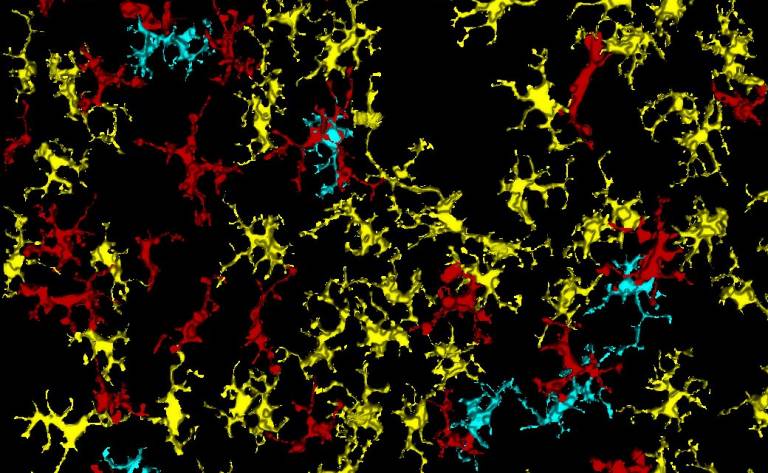Resurrecting sentinels in the skin
28 August 2019
A research team led by Dr Clare Bennett has shown how damaged Langerhans cells in the skin can be replenished by monocytes in order to preserve essential immune function.

Langerhans cells (LC) are a network of innate immune cells that sit in the outer layer of the skin, the epidermis. They are crucial for maintaining a balance between the activation of immunity against infection, while at the same time making sure that we don’t react to everyday minor injuries.
When a patient is being treated for cancer with a bone marrow transplant from a donor, they also receive white blood cells, called T cells, which see the patient’s cancer cells as foreign and kill them. However, these donor T cells can enter the skin where they also kill healthy cells, including LC. This destruction of healthy cells is known as graft-versus-host disease (GVHD).
LC are present in the skin before birth and become sealed in the skin throughout life. Over time the LC which are destroyed by GVHD are replenished by the body, however the process for this regeneration is not fully understood.
“In this study, we wanted to try and understand how the LC can be repaired in these patients if the original cells came from the embryo before they were born,” explains Dr Clare Bennett, lead author and Reader in Immuno-haematology at UCL’s Institute for Immunity and Transplantation, and Cancer Institute Department of Haematology.
The research team showed that a population of immune cells called monocytes can enter the skin and change from being short-lived cells to becoming long-lived replacement LC.
“This suggests that our need to carefully control immune responses in the skin so important that, even if a different cell comes in to replace the LC network, signals in the epidermis make sure that those cells can function in the same way as the original LC. Understanding this will give us insights into how immune protection in the skin can be lost in some diseases, and how we might be able to fix it,” says Dr Bennett.
This work has been supported by BBSRC, MRC and Royal Free Charity.
Further information
- Research paper: A wave of monocytes is recruited to replenish the long-term Langerhans cell network after immune injury. Science Immunology
- Dr Clare Bennett academic profile
- Institute for Immunity and Transplantation
- Main Image: Resident and repopulating Langerhans Cells. Credit, Clare Bennett
- Source: Science Immunology.
 Close
Close

